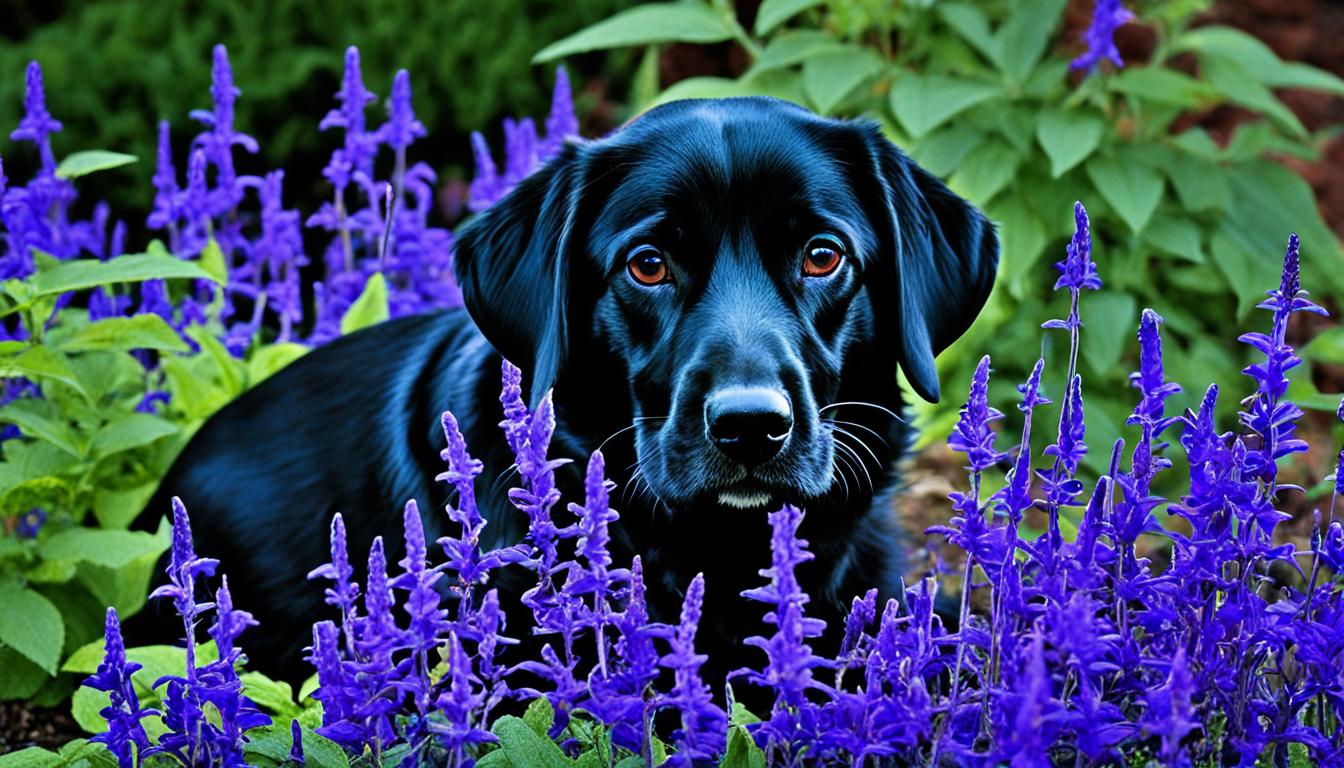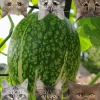Key Takeaways
Salvia plants are not toxic to cats and dogs, making them a safe choice for pet-friendly gardens.
Hardy varieties of salvia can withstand drought conditions and grow well in various climates.
Salvias thrive in containers with proper soil, drainage, and sunlight.
Creating a sensory garden for pets with salvia can enhance their environment and well-being.
Regular maintenance, including watering, feeding, and pruning, ensures healthy and vibrant salvia plants.
Hardiest Pet Safe Salvia for Cats & Dogs and Growing Tips
The Toughest Pet Safe Salvias
When it comes to choosing the hardiest pet-safe salvia for your garden, several varieties stand out. These plants not only offer stunning blooms but also require minimal care, making them perfect for busy pet owners.
One of the toughest varieties is Salvia ‘May Night’ (Salvia nemorosa). This perennial plant is known for its deep purple flowers and ability to thrive in various conditions. It is drought-tolerant and can handle both full sun and partial shade.
Another excellent choice is Salvia ‘Hot Lips’ (Salvia microphylla). This variety features unique red and white flowers and is highly resilient to pests and diseases. It can grow in well-drained soil and requires little water once established.
For those in colder climates, Salvia ‘Snow Hill’ (Salvia nemorosa) is a hardy option. It produces white flowers and can withstand frost, making it a reliable choice for gardens in USDA Hardiness Zones 3 to 9.
“Are Salvias Toxic to Dogs? Pet Safety Guide” from petproductguide.co.uk and used with no modifications.
Benefits of Pet Safe Salvias
Choosing pet-safe salvias for your garden offers numerous benefits. Firstly, you can have peace of mind knowing that your furry friends won’t be harmed if they decide to nibble on the plants. Salvia plants are not listed as dangerous to cats or dogs.
Besides that, salvias are incredibly versatile and can be used in various garden settings. Whether you have a large outdoor space or a small balcony, there’s a salvia variety that will thrive in your environment. They are also known for attracting pollinators like bees and butterflies, which can enhance the biodiversity of your garden.
Most importantly, salvias are low-maintenance plants. They don’t require constant watering or feeding, making them ideal for pet owners who may not have a lot of time for gardening. With the right care, these plants can provide vibrant blooms throughout the growing season.
Do Salvias Do Well in Containers?
Salvias can thrive in containers, making them a versatile option for pet owners with limited garden space. Growing salvias in pots allows you to place them on patios, balconies, or even indoors near sunny windows.
Choosing the Right Containers
Selecting the appropriate container is crucial for the health of your salvia plants. Ensure that the pots have drainage holes to prevent waterlogging, which can lead to root rot. Containers made of materials like terracotta or plastic are suitable choices.
It’s also important to consider the size of the container. Salvias generally have extensive root systems, so choose a pot that is at least 12 inches in diameter and depth. This provides enough space for the roots to grow and ensures the plant remains stable.
For example, if you choose Salvia ‘May Night,’ a container with a diameter of 12-16 inches is ideal. This size ensures that the plant has enough room to grow and allows for proper air circulation around the roots.
Soil and Drainage Requirements
Salvias prefer well-drained soil, so it’s essential to use a high-quality potting mix. Avoid garden soil, which can be too heavy and retain too much moisture. Instead, opt for a mix that contains perlite or sand to improve drainage.
Before planting, add a layer of gravel or small stones at the bottom of the container. This helps to further enhance drainage and prevents the roots from sitting in water. Additionally, make sure to place the container in a location where it will receive at least 6 hours of sunlight per day. For more information on pet-safe plants, you can check out rosemary.
Watering and Feeding Tips
While salvias are drought-tolerant, they still need regular watering, especially when grown in containers. Check the soil moisture by sticking your finger about an inch into the soil. If it feels dry, it’s time to water.
Water the plants thoroughly, allowing the excess water to drain out of the bottom of the container. This ensures that the roots receive adequate moisture without becoming waterlogged. During the growing season, you may need to water more frequently, especially in hot weather.
Feeding your salvia plants is also important for their health and vitality. Use a balanced, slow-release fertilizer at the beginning of the growing season. Follow the instructions on the fertilizer package for the correct application rate. You can also supplement with a liquid fertilizer every 4-6 weeks to encourage blooming.
Best Salvias for Growing in Pots
Top Varieties Suitable for Pots
When selecting salvia varieties for container gardening, consider those that are compact and well-suited for pot culture. Here are some top choices:
Salvia ‘Blue Marvel’: This variety produces striking blue flowers and has a compact growth habit, making it perfect for pots.
Salvia ‘Victoria Blue’: Known for its vibrant blue spikes, this salvia grows well in containers and attracts pollinators.
Salvia ‘Hot Lips’: With its unique red and white flowers, this variety is both eye-catching and resilient, thriving in pots with minimal care.
Salvia ‘Autumn Sage’: This variety offers a range of colors, from red to pink to purple, and is well-suited for container growth.
Caring for Potted Salvias
Maintaining healthy potted salvias involves a few key practices. Regularly check the soil moisture and water as needed, ensuring that the soil remains consistently moist but not waterlogged. During hot weather, you may need to water more frequently. Additionally, it’s important to know that Texas sage is not toxic to pets, making it a safe choice for households with cats and dogs.
Pruning is also essential to encourage new growth and maintain the plant’s shape. Trim back spent flowers and any leggy growth to keep the plant looking tidy. Deadheading, or removing faded blooms, can also promote further blooming throughout the season.
In addition to watering and pruning, monitor your plants for pests and diseases. Common issues include aphids, spider mites, and powdery mildew. If you notice any signs of pests or disease, take action promptly to prevent them from spreading. For instance, you can use pet-safe solutions to manage these issues without harming your furry friends.
Repotting and Maintenance
Over time, your potted salvia may outgrow its container and need repotting. Signs that it’s time to repot include roots growing out of the drainage holes or the plant becoming top-heavy and unstable. For more information on pet-safe plants, check out this article on pet-safe Angelonia.
To repot your salvia, choose a container that is one size larger than the current pot. Gently remove the plant from its existing pot, being careful not to damage the roots. Place the plant in the new container, filling in around the roots with fresh potting mix.
After repotting, water the plant thoroughly to help it settle into its new home. Continue to monitor the plant for signs of stress, such as wilting or yellowing leaves, and adjust your care routine as needed.
Creating a Sensory Garden for Pets
Selecting Salvia Varieties
Creating a sensory garden for your pets can provide them with a stimulating and enriching environment. When selecting salvia varieties for a sensory garden, consider those with vibrant colors, interesting textures, and pleasant scents.
Some great choices include the pet-friendly Sweet Alyssum for your garden.
Salvia ‘Amistad’: Known for its deep purple flowers and strong fragrance, this variety is both visually and olfactorily appealing.
Salvia ‘Lemon Light’: This variety has bright yellow flowers and a lemony scent, adding a refreshing touch to the garden.
Salvia ‘Wendy’s Wish’: With its magenta flowers and sweet fragrance, this salvia is sure to captivate both you and your pets.
Garden Layout and Design Tips
When designing a sensory garden for pets, consider their safety and comfort. Create pathways and open spaces where they can explore and play. Use raised beds or containers to keep plants at a height that’s easy for them to access and sniff.
Incorporate a variety of textures by mixing different types of salvias with other pet-safe plants. For example, you can combine the soft leaves of Salvia ‘Hot Lips’ with the spiky foliage of ornamental grasses. This adds visual interest and tactile stimulation for your pets. For more tips on growing salvias, check out how to plant and grow salvia.
Additionally, consider adding elements like water features, rocks, and shaded areas to create a diverse and engaging environment. Ensure that all plants and materials used in the garden are non-toxic and safe for pets.
Ensuring a Safe Environment
Creating a safe environment in your sensory garden is paramount. Make sure that all the plants you choose are non-toxic and safe for pets. Besides salvias, you can include other pet-safe plants like marigolds, sunflowers, and snapdragons.
Remove any potentially harmful objects or chemicals from the garden area. Avoid using pesticides or herbicides that could be harmful if ingested by your pets. Instead, opt for natural pest control methods, such as introducing beneficial insects or using homemade remedies.
Benefits of a Sensory Garden for Pets
A sensory garden offers numerous benefits for your pets. It provides them with a stimulating environment that can help reduce stress and anxiety. The variety of scents, textures, and colors can keep them engaged and entertained. For example, incorporating pet-safe plants like Texas sage ensures their safety while they explore.
Furthermore, a sensory garden encourages physical activity and exploration, promoting overall health and well-being. It can also strengthen the bond between you and your pets as you spend time together in the garden, enjoying the sights and smells. Learn more about creating a pet-friendly garden to ensure your furry friends are safe and happy.
Frequently Asked Questions
Are salvias toxic to pets?
No, salvias are not toxic to pets. They are safe for both cats and dogs, making them an excellent choice for pet-friendly gardens. However, it’s always a good idea to monitor your pets and discourage them from chewing on any plants.
How often should I water potted salvias?
Potted salvias should be watered regularly to keep the soil consistently moist but not waterlogged. Check the soil moisture by sticking your finger about an inch into the soil. If it feels dry, it’s time to water. During hot weather, you may need to water more frequently.






